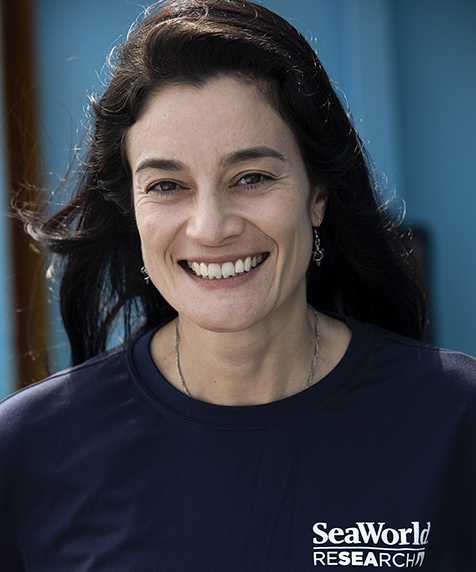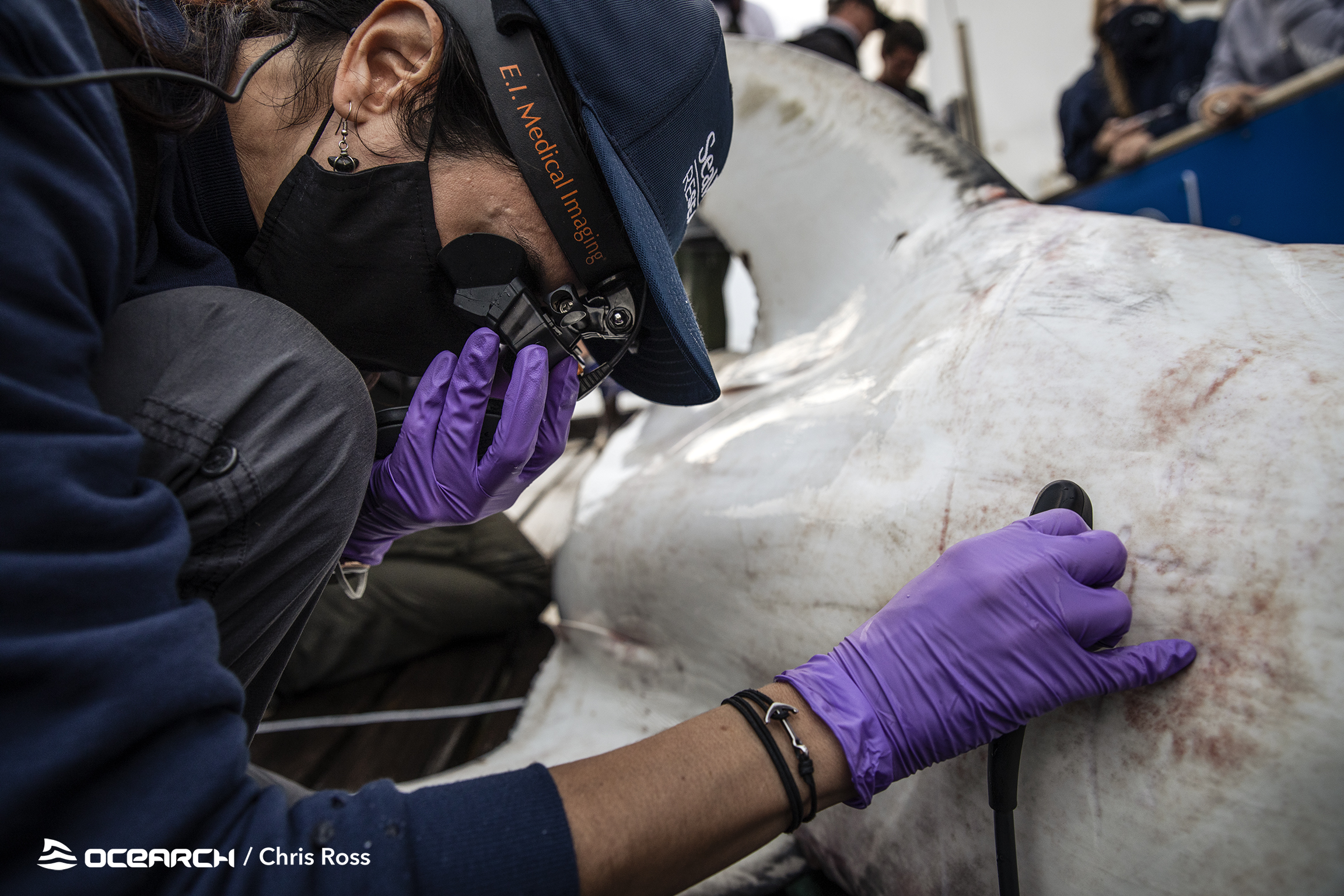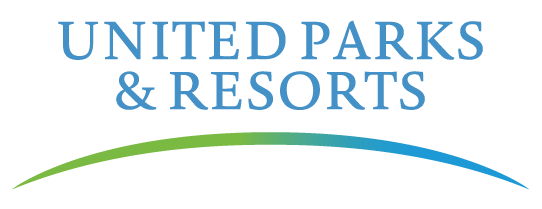SeaWorld Veterinarian Joins OCEARCH’s Expedition Carolinas
June 8, 2021
 SeaWorld Veterinarian and Reproductive Physiologist Dr. Gisele Montano recently joined the global non-profit organization OCEARCH on an ocean research expedition off the coast of the Carolinas. Dr. Montano shares more about SeaWorld’s partnership with OCEARCH and her experience on the expedition below.
SeaWorld Veterinarian and Reproductive Physiologist Dr. Gisele Montano recently joined the global non-profit organization OCEARCH on an ocean research expedition off the coast of the Carolinas. Dr. Montano shares more about SeaWorld’s partnership with OCEARCH and her experience on the expedition below. The Partnership between OCEARCH and SeaWorld
“It is a privilege to be part of such a great partnership between SeaWorld and OCEARCH. They both share the same concern about the health of the ocean and the animals that live in it. Both organizations aim to educate and inspire kids and adults to live a more conscious life and be aware of the animals we share the planet with. If we want the future generations to see what we can see today, we need to find a way to preserve it and we are striving to do just that.At SeaWorld, I examine and collect samples from different species of sharks, but being able to participate in OCEARCH’s expeditions gives me access to more animals in the wild. I use the skills I have perfected over my years at the parks, to examine white sharks on the M/V OCEARCH platform. My colleagues and I collect a multitude of samples for over 20 different projects. This data can then be used to make real changes to benefit the white shark population. The protection of mating grounds, nurseries and critical feeding grounds can be the key to any species’ survival in the long term, including sharks.”

What was the focus of OCEARCH’s Expedition Carolinas?
“There is so much we still don’t know about shark reproduction and I feel truly honored to even touch these magnificent animals.My role onboard the OCEARCH Vessel is to ultrasound all animals and collect semen from mature male sharks. During ultrasound, I can evaluate the reproductive tract of the females and check for the presence of semen in a compartment storage called ampullae. If semen is collected we can infer that the animal is a mature male and is reproductively active.
The unique aspect of OCEARCH’s recent expedition to Carolinas was to investigate the area as a possible mating ground for white sharks. We have been trying to determine if white sharks have a preferred location during their yearly migration up the Northwest Atlantic coast. According to the immense movement and track data that we have received from our past tagged sharks, it seems that both males and females spend some time near the coast of South and North Carolina at this time of the year. However, weather conditions play a big role when we are out there and it’s difficult to make any conclusions at this point. We need to go back there, spend more time on the water and examine more animals.”
Partnering over the past five years, SeaWorld and OCEARCH, have discovered so much about our oceans’ sharks together. The data collected on past expeditions has allowed us to learn more about the specific life stages of the animals as well as opened up new key locations to research, such as the area recently explored off the coast of North Carolina. We are excited to continue exploring our world’s oceans and the animals that call it home alongside OCEARCH.
